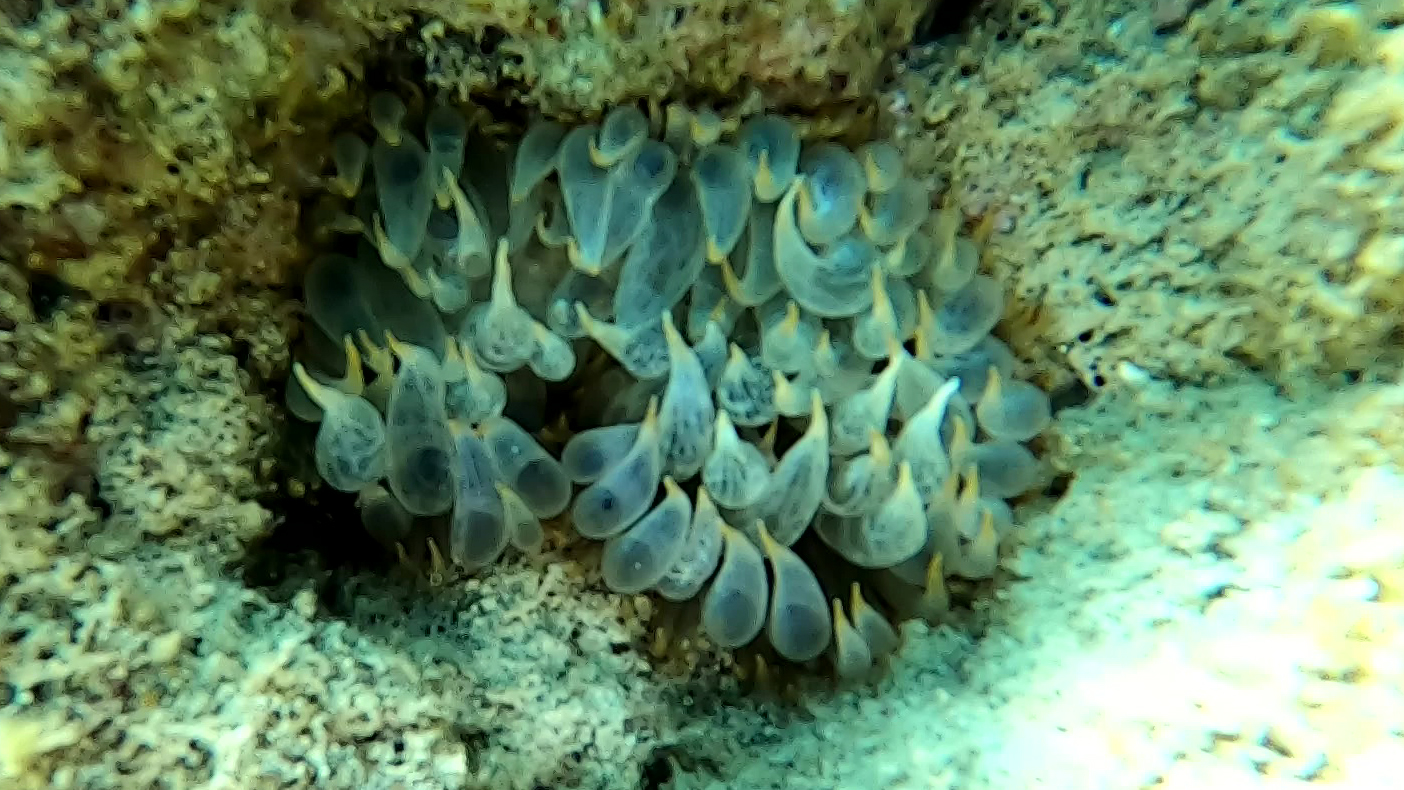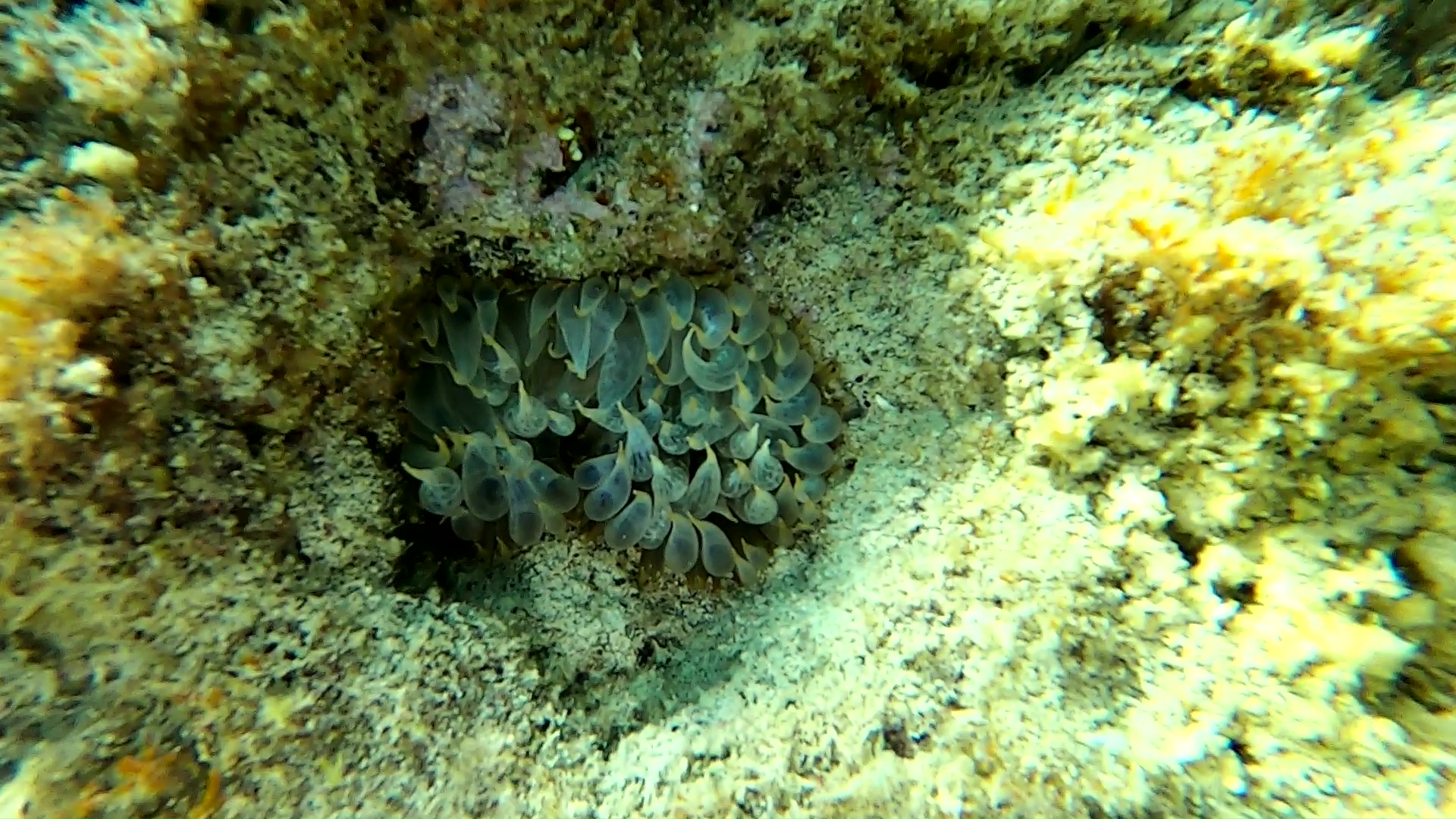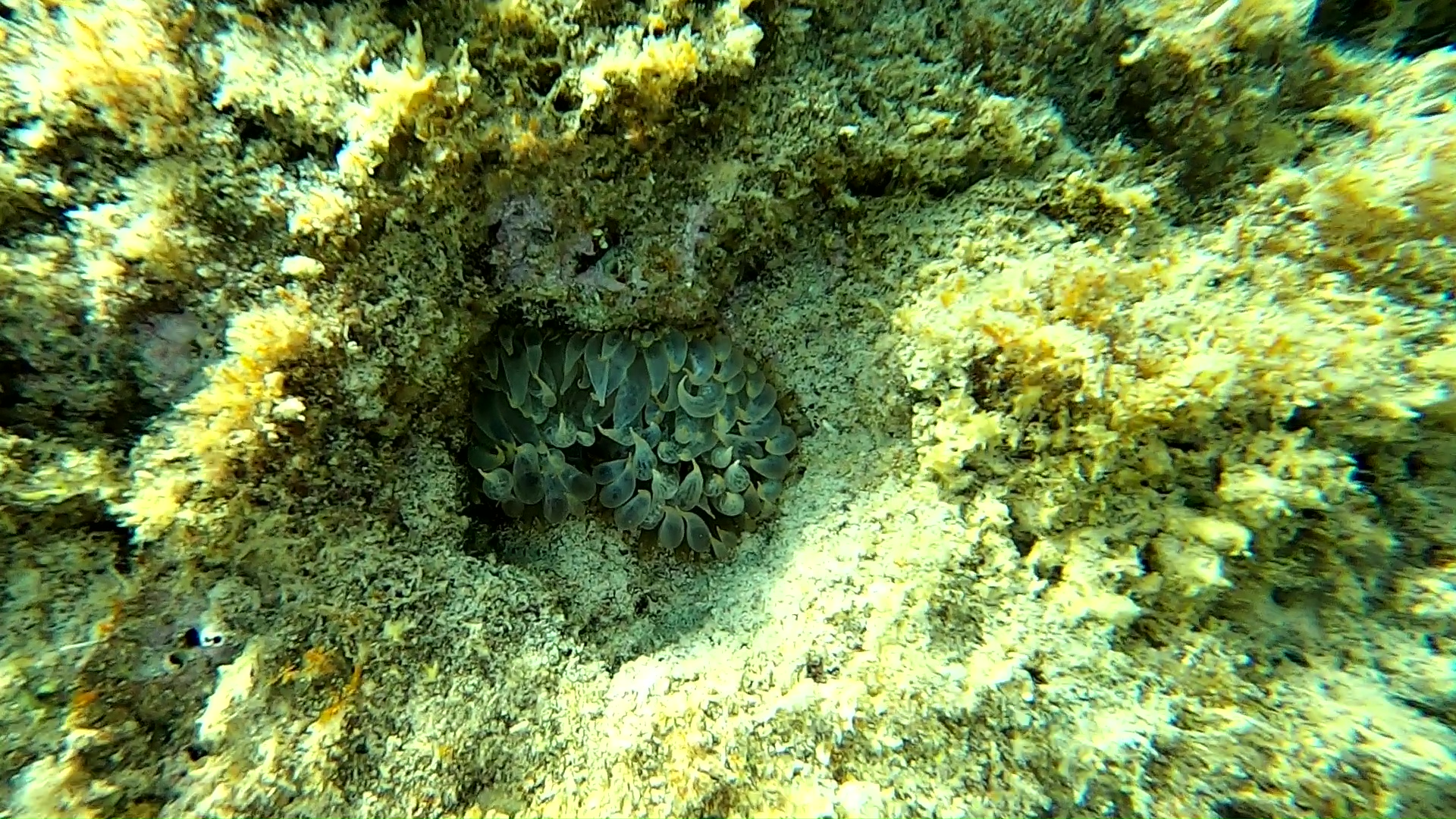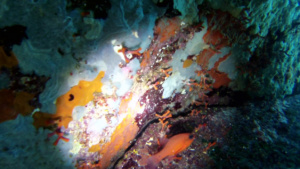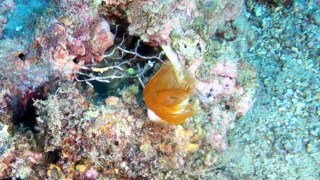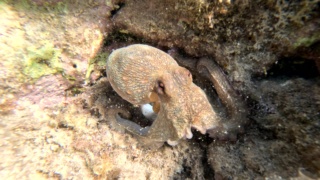Aiptasia mutabilis Trumpet anemone or Brown anemone is one of the species of anemone typical of the Mediterranean Sea, it is not as common as the classic anemone Anemonia sulcata, but it is easy to find if we dive into reefs where the sea conditions are not yet too man-made. It is easily recognized since its tentacles are almost completely transparent with more opaque rings of various colors.
Trumpet anemone belongs to the philum of the Cnidarians, to the class of the Anthozoans, to the subclass of the Esacorallians and to the order of the Actiniaries.
The name cnidarians justifies the presence of cnidocysts or rather stinging cells, distributed throughout the body and mostly in the tentacles.
They are otherwise called coelenterates possessing a gastric cavity called coelenteron which, together with a primitive muscular structure, places the cnidarians at a first level of evolution in the anatomical organization.
Brown anemone (Aiptasia mutabilis Gravenhorst, 1831) is an anthozoan belonging to the Aiptasiidae family widespread in the Mediterranean Sea and in the eastern Atlantic. It lives on rocky bottoms, in ravines or among algae.
Description
It has several long and translucent tentacles used by the anemone to capture prey and to defend itself, by emitting stinging white filaments, called aconzi. The column is brown in color and the base has a smaller diameter, with which these invertebrates can both anchor themselves firmly on a rock and migrate in search of a safe place suitable for their needs.
Biology
It feeds on detritus and, in the more adult and developed stages, also on small-sized fish. The sexes are separate and asexual reproduction occurs by division of the spine.
Behavior in captivity
Often an unwelcome guest of marine aquariums, due to its infesting behavior, Aiptasia is known for its particular speed of reproduction, which in captivity almost always occurs asexually. Natural predators are some species of nudibranchs.
https://it.wikipedia.org/wiki/Aiptasia_mutabilis
https://en.wikipedia.org/wiki/Aiptasia_mutabilis
Gallery
 English
English Italiano
Italiano
